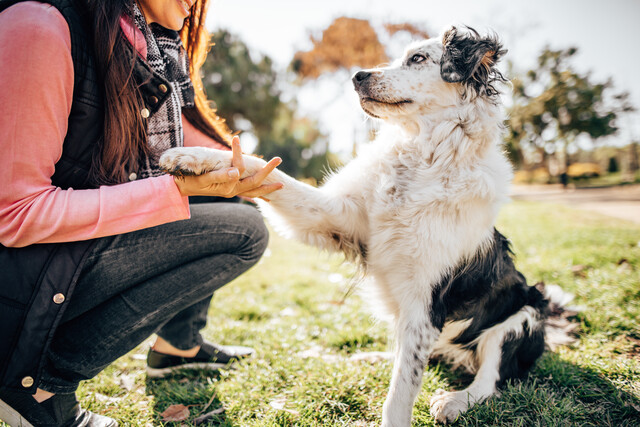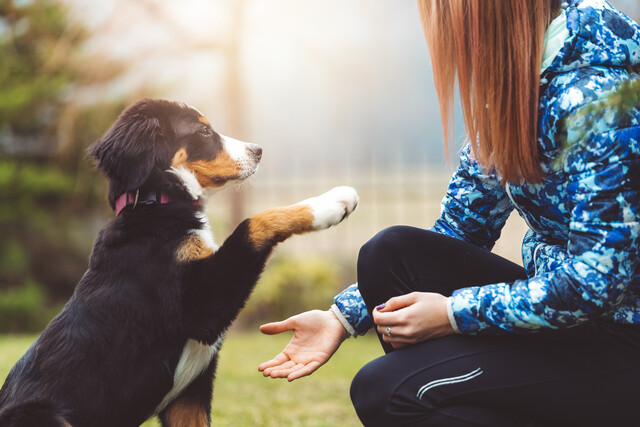Introduction: Marketing is the activity of making yourself known to your customers. If you don't promote what you do and what services and products you sell, then who would even know to grace your presence. There is so much more to marketing than simple advertising. Yes, you do want people to use your services and buy your products. More than that, though, you have to sell why your dog day care is better than the others, what you do that is different or unique, and what services you offer that they can't get somewhere else. You have to make your dog day care stand out from the crowd. You are asking customers to end their loyalty to other day care owners and trust you.
This requires a campaign to inform the public about your center. And marketing never ends. You have to keep it up, change it around, make it fresh and continually call the public's attention toward how much your dog day care offers the customer and their pet. It is not to put down another dog day care or to create contention. Hopefully you are different and can focus your marketing on your special offerings instead of trashing another dog day care.
Marketing What You Are About: A new business in the community can create a stir among the locals. They notice. But the question is how to get them in the door. Your first step is to greet your business neighbors as soon as you make your location decision. Get to know them and let them get to know you. Ask about people they know who might use your services and let them know you are open to working with group plans for local businesses. In other words, give a break to those business neighbors and their employees. Though you can't lose money, you should have enough flexibility to make them a good offer. In the beginning you have to get the customer through the door. If you do a good job, they will return. If you do a good job, they will naturally spread the word. That's your best marketing.
Long before you open the doors, before you have attained funding, you will have made decisions about what kind of dog day care yours will be. A big part of that, is what the local community needs and wants. Hopefully you did your research and your center offers something that fits this niche. If you offer the same thing another dog day care offers, in the same way and at the same cost, why would anyone take time to make a change and go through the stress it would cause their dog? You have to give people a reason to switch. Give them a reason in their busy schedule to even walk into check you out.
This is where marketing comes in. Your dog day care name, your logo, the colors you use, the set up, and the words and phrases that will become associated with your center must focus on one thing. That one thing is the reason they should leave their dog in your care. It has to be told in a phrase or a picture. People have to be able to understand who you are and what you are about in a matter of minutes - maybe seconds. You have to put yourself in the customer's shoes. If you had a dog and already used a dog day care, what would it take to get your attention.? What would it take to get you to even consider a change? You won't be successful by merely holding an open house and offering cookies and dog biscuits.
Find your nearest humane shelter and offer to work with them in some way. Maybe you could let your employees volunteer there one day a month with pay, or offer to take one dog once in a while to socialize them with other dogs. For no cost you could offer to let them bring dogs for adoption to your shelter on a Saturday, once a month and promote those adoptions. You could even throw in some discounted products or services for a month or so if a dog is adopted. Every person you come into contact with is a possible customer, even if they have no dog. They will know someone who has a dog, they may get a dog, or they may purchase gifts for friend's dogs.
Getting creative by offering to host a party for people with new dogs and friends. They can purchase gift cards or products or services from you to give to the person with the new dog. It will not only be a wonderful and fun service to offer, it will get people in the door, allow you to demonstrate your care of animals and help new dog owners to feel comfortable with your dog day care.
Marketing what you are about includes everything from your storefront, to your front waiting area, to your outdoor area. Keep it clean, beautiful, and easy to access. The money you spend on appearances will pay off. If you cut corners on how you present yourself to your public, customers will wonder where else you cut corners. You have to offer reasonable prices and then put a sparkle on every part of your business. You place of business should reflect your good management, organization, cleanliness standards, knowledge and pride in what you do. The way you dress, talk, walk, and greet others should market your business. Never underestimate that first connection you make with your community. Make every glance in your direction count. Don't lose any opportunity to market what you are about.
Marketing Your Services: In the beginning of this process, you made a list of the wants and needs of the community where you wanted to locate. What services did you put down on that list? What is it the community needs that you can supply? Maybe it was just a more updated, clean, and healthy atmosphere. Maybe it was a place that offered more technology for dog owners or different kinds of services. Go back to that list and consider it. What services are you planning for and building into your facility. Wiring for higher grades of technology, putting in plumbing for dog bathing areas, and provision of quiet areas for pets should be in the works as you consider your marketing strategies.
Another strategy is to partner with a local corporation or business to offer group rates on a service like grooming or day care.
Building your own website and making it easy to use, is a strategy that may cost, but it will pay off, and you can learn to do it yourself. There are websites that are free. Creating a name, logo and possibly a catch phrase that communicates your service is important as well. Communicate in every way possible about your services and costs. People will not come in to leave their dog without first knowing what it will cost them. Make that clear. Your phone should have a line that gives services offered and costs so people can call any time of the night or day to get that information. You should have another line about your products.
Other strategies are to market special services that you offer. If you offer vet care, tell how that works. If you offer a free health check day, let people know. Getting creative with free services will create a community of people who trust you, know you care about their pets, and see that you want to be involved in the dog community. You can ask a local radio show if you might give a 10-minute pet update once a month or more often. You offer it free but it pays because it is advertising for you with the cost of a little time.
Marketing also involves working with people who have difficulty paying, finding care for their dog on a day when you are full, or knowing people in the area who offer home based services. Work with these home based dog entrepreneurs because when you do you are marketing your flexibility and openness. Services do not end with the list of those for which you charge. Services include all actions you take to help others. Giving a short training at the boy scout meeting, talking at a local service organization, going to job fairs offered by high schools and community colleges, and setting up a system of volunteers to check on shut-ins or elderly adults who have a dog.
Don't forget that your marketing can cost money, but can also be paid for in your time, your knowledge, and with the genuine kindness of your interactions with others. Being the kind of person you would trust a child with, is the same perception a pet owner looks for. Dogs and their humans are your bread and butter. Know them, care about them, and treat them with honesty, sincerity, and love.
Marketing Your Products: Because people love to shop, they buy things they need and don't need, and find a thrill or happiness in picking up products to take home, so you must provide this opportunity to your customers. You want your products to be safe, healthy, and varied. Your products can be offered on your website too. Let people know that you can ship, deliver locally, or you can sell it to them directly through the store. Highlight or link up with other sites that sell products that you can't or don't offer but are clearly ok for dogs.
Keeping shampoos, tick and flea treatments, paw creams, beds, brushes, nail clippers, hair trimmers, and hair dryers on hand for your customers to just pick them up when they pick up their dog. No one wants to have to go to the store after a long day at work just to get one thing. Make those daily used products available and make sure you have the kind your customers use.
Your biggest concern is to do your research and make sure you offer no product that will harm any dog or human. Mark clearly items that are not intended for smaller dogs. You might even divide you store area into small sections. In your store have a collection box for the local animal shelter. People can drop off things they no longer use or put in newly purchased items. It will also be stored items for families who have a disaster and need animal assistance.
|
Dog FAQS: The American Society for the Prevention of Cruelty to Animals or ASPCA� posts a list of people food that should be avoided by your dogs. The list includes alcohol, avocados, coffee, caffeine, chocolate, citrus, coconuts or coconut oil, grapes raisins, all nuts, dairy, onions, chives, garlic, undercooked eggs or meat, bones - unless they have been cooked until soft, salt or salty foods, a synthetic sweetener xylitol, and yeast dough. These foods cause havoc with a dog's digestive system. In the least they will give your dog an upset stomach, diarrhea and vomiting, but can also lead to organ failure, nervous system problems and even death. If your dog does eat any of these things, call poison control for animals at (888) 426-4435. If you would like more information about the severe reactions these foods pose, go to the ASPCA� website where they are discussed in detail. |
Marketing is about seeing the potential for interaction between what you provide and the people and dogs living in your area. There are many creative and innovative ideas that have a minimal cost yet stir up great positive energy for you and your business. Don't forget that you and your business are one. You and your employees are the face of your business and marketing begins with those faces. Don't let yourself fall into a lull with marketing. Even if your business is full and you are very successful, marketing must continue. Marketing keeps your public informed that you are still there, you are available in many ways to help them, and you care. You can always offer your off-hours for special events sponsored by you or someone else.
Be the dog lover's place to go. Make your business a place to hang out, get to know others who love dogs, and a place where people feel comfortable and accepted along with their dogs. Love people, love their dogs.

























